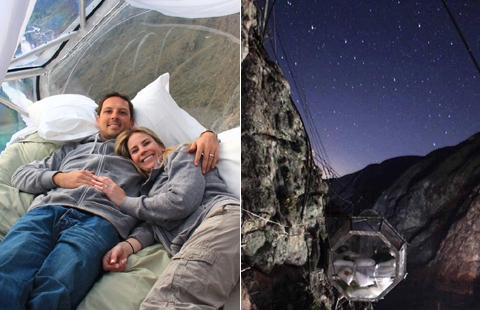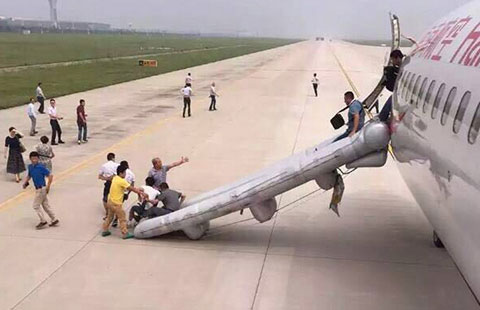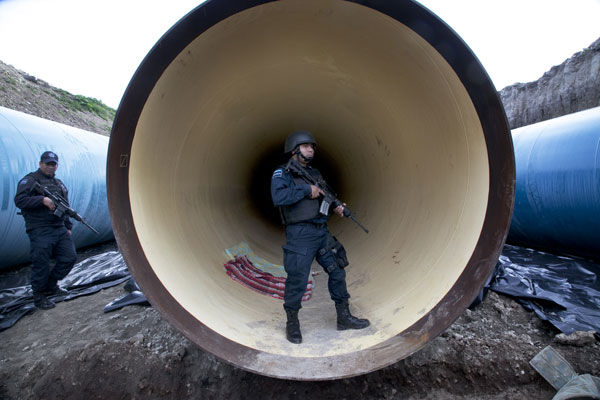Mexico: Drug lord 'El Chapo' Guzman escapes, manhunt begins
Updated: 2015-07-13 07:50
(Agencies)
|
||||||||
Guzman was last seen about 9 pm in the shower area of his cell, according to a statement from the National Security Commission. After a time, he was lost by the prison's security camera surveillance network. Upon checking his cell, authorities found it empty and a 20-by-20-inch (50-by-50 centimeter) hole near the shower.
Guzman's escape is a major embarrassment to the Pena Nieto administration, which had received plaudits for its aggressive approach to top drug lords. Since the government took office in late 2012, Mexican authorities have nabbed or killed six of them, including Guzman.
Guzman faces multiple federal drug trafficking indictments in the US as well as Mexico, and was on the US Drug Enforcement Administration's most-wanted list.
After Guzman was arrested on Feb. 22, 2014, the US said it would file an extradition request, though it's not clear if that happened.
The Mexican government at the time vehemently denied the need to extradite Guzman, even as many expressed fears he would escape as he did in 2001 while serving a 20-year sentence in the country's other top-security prison, Puente Grande, in the western state of Jalisco.
Former Mexican Attorney General Jesus Murillo Karam told the AP earlier this year that the US would get Guzman in "about 300 or 400 years" after he served time for all his crimes in Mexico.
He dismissed concerns that Guzman could escape a second time. That risk "does not exist," Murillo Karam said.
"It wasn't overconfidence; it was Mexican judicial nationalism," said Raul Benitez, a security expert at Mexico's National Autonomous University. "First he had to pay his debt in Mexico and then in the US. Now it's very evident that it was a mistake."
It was difficult to believe that such an elaborate structure could have been built without the detection of authorities, though photographs show the corrections facility surrounded by construction, with large open ditches and lots of metal drainage pipes that could have camouflaged such a project.
Guzman dropped by ladder into a hole 10 meters (30 feet) deep that connected with a tunnel about 1.7 meters (5 feet-6 inches) high that was fully ventilated and had lighting, Rubido said.
Authorities also found tools, oxygen tanks and a motorcycle adapted to run on rails that they believe was used to carry dirt out and tools in during the construction.
The tunnel terminated in a half-built house in a farm field, according to radio transmissions among authorities, who cordoned off the structure that sits atop a small rise with a clear view of the prison. They would not confirm the location of the end of the tunnel directly.

 Top gaokao scholars saddle up for a ride in the park
Top gaokao scholars saddle up for a ride in the park
 Girl who shoots straight with bow and arrow
Girl who shoots straight with bow and arrow
 Ten photos you don't wanna miss - July 10
Ten photos you don't wanna miss - July 10
 Forum Trends: Should we pay children to study?
Forum Trends: Should we pay children to study?
 Bereaved seniors turn attention to grandchildren
Bereaved seniors turn attention to grandchildren
 Unusual but true: sleep in a transparent glass room clinging to cliff
Unusual but true: sleep in a transparent glass room clinging to cliff
 24-year-old ethnic Chinese girl runs for US Congress
24-year-old ethnic Chinese girl runs for US Congress
 Plane makes emergency landing after fire
Plane makes emergency landing after fire
Most Viewed
Editor's Picks

|

|

|

|

|

|
Today's Top News
Mexico: Drug lord 'El Chapo' Guzman escapes, manhunt begins
Lawyers held for 'trying to influence verdicts'
Top court official under inquiry for graft
It is wrong to label illegal immigrants refugees: Opinion
Leaders agree on partnership blueprint
New Development Bank launched in Ufa
IMF keeps 6.8% China growth view
Leaders agree on partnership blueprint
US Weekly

|

|







